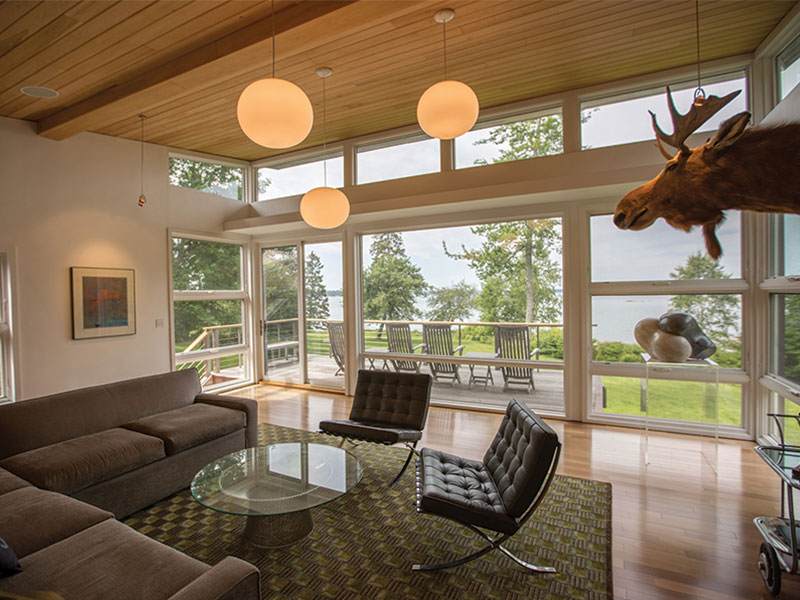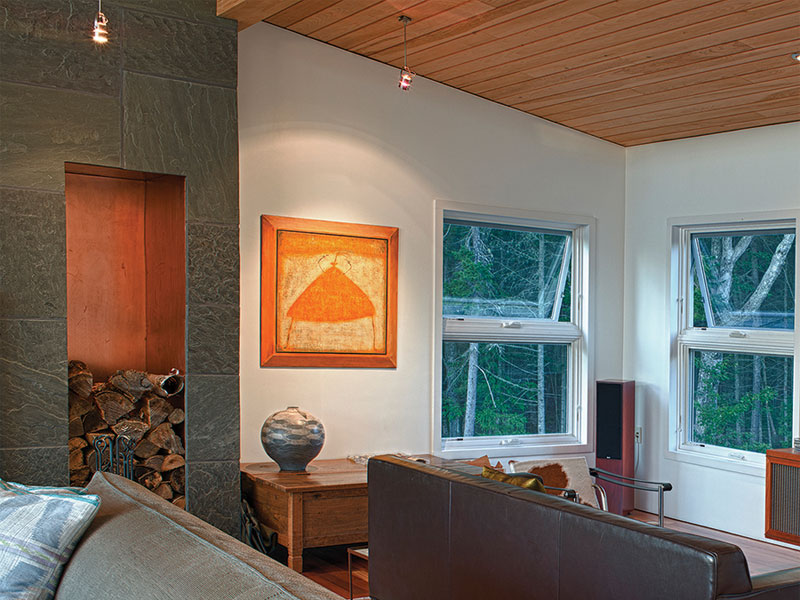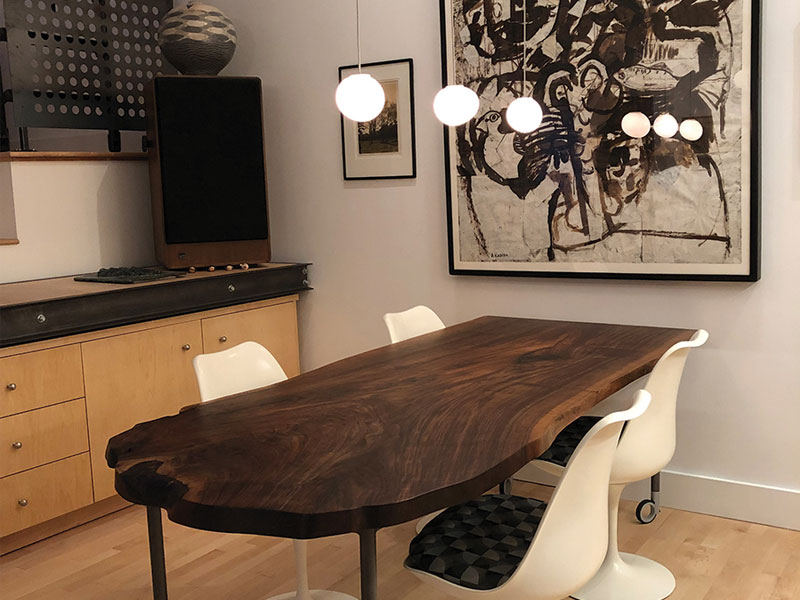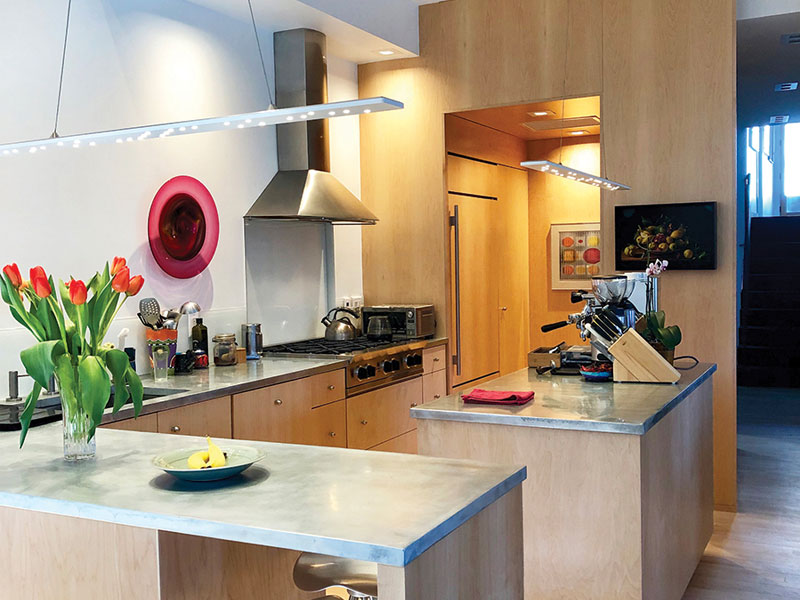By Lauren Reiter, Architect

Lighting is so integral to the quality of a space, that bad lighting can make an otherwise nice space feel terrible, and conversely, good lighting can make a dismal space tolerable.
Of course, the achievement of “good” lighting is based on a fundamental understanding of how people live and work in their spaces, as well as how natural light can be integrated and exploited within a space. People not only have an emotional reaction to lighting, but also a physiological one. Our bodies were “designed” over the eons to respond to 24 hour cycles of light and darkness, with different light qualities evoking different responses during different periods of the day. Known as the Circadian Rhythm, our bodies and minds are naturally energized by bright daylight and are relaxed by dimmer light at the beginning and end of the day. Further, our eyes were developed to see the fully-but-softly lit sky canopy overhead, so our eyes are more comfortable with a softly lit ceiling than with the high contrast effect of bright lights coming down from an otherwise unlit ceiling plane.
So how does all of this translate to actual lighting design?
Bring in as much natural light as you can and tame it as needed by shades or other means of control. Use artificial light (any/all types of light fixtures) in different ways to achieve different effects – and remember that the color of artificial light is critical. Light bulbs and artificial light color is known as color temperature and is measured in the Kelvin scale. A cool, white bulb commonly has a color temperature of 4,000K and higher, a warm color temperature is typically 3,000K or less.
Here are some specific lighting tips:
– Put light directly where you need it (known as “task lighting”) and avoid over lighting spaces that don’t need to be overly bright, like hallways.
– Light artwork and/or special places.
– Use light to communicate the big event or special place, like the kitchen counter your friends always park at or the comfiest reading chair in the living room.
– When looking in a mirror, put light on the same level as your face, not above.
– Avoid overhead fixtures that glare and are unflattering to people’s faces; overhead lights can easily create downward shadows. Fixtures that send light upward, which is then bounced off of the ceiling, are both flattering and comfortable.
– Control most fixtures by dimmers. Almost all lights in the living spaces (living/dining room, kitchen, bedrooms, office, hallways, etc.) should have dimmers. This allows you to change the light levels according to your mood or the effect that you want to create.
– Hire a professional to help with this crucial aspect of design.
The world of lighting has been greatly transformed in the last several years with the introduction of LED lighting. Thankfully, one can achieve many different types and qualities of lighting while also using very little energy.
For more information on Lauren Reiter and Reiter Architecture & Design, visit their website and find them on Facebook
Comments are not available on this story.
Send questions/comments to the editors.





